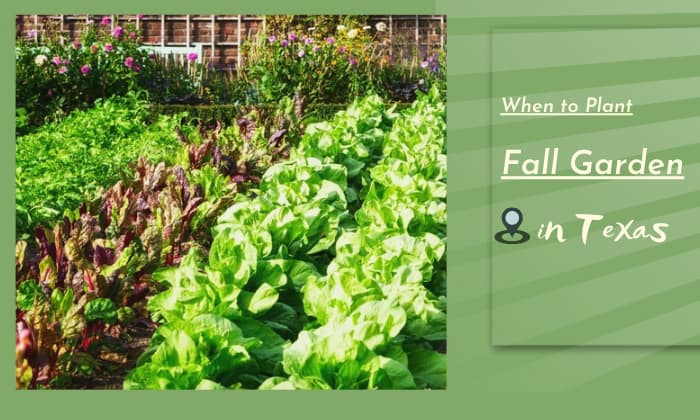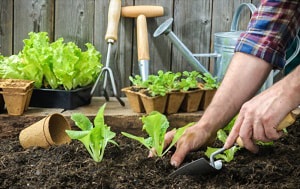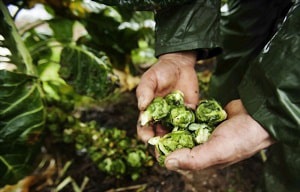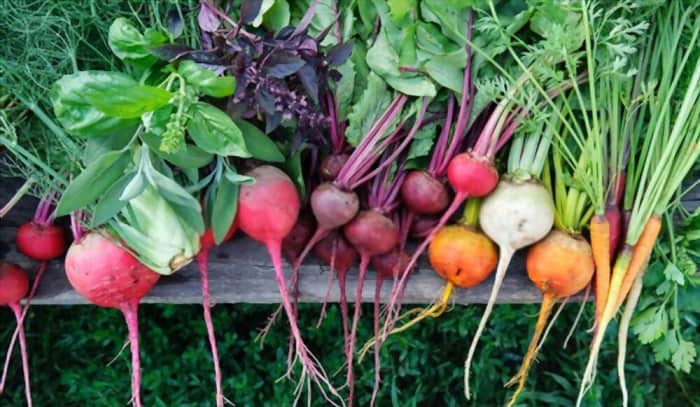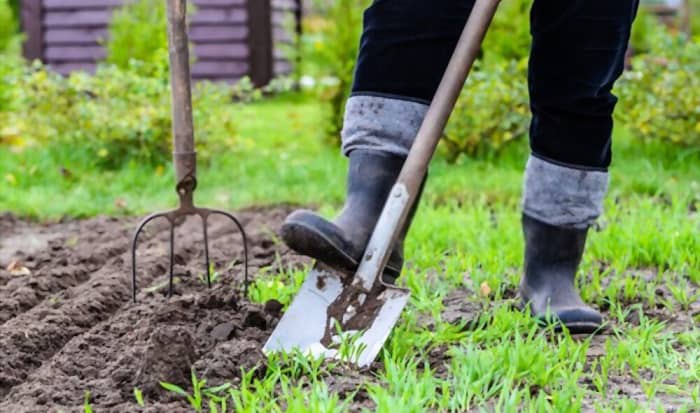Planting a fall garden gives crops the advantage of flourishing under the season’s warm soil yet cooler weather, fewer pests, and frequent rains.
If you want to know when to plant a fall garden in Texas, this post is for you as we will discuss the ideal sowing time.
While the average time to sow your fall crops is between August and early October, a more specific planting calendar is 6-12 weeks before the first frost date of your region.
Table of Contents
Best Time to Plant a Fall Garden in Texas
1. Plant fall vegetables in Texas from August through early October.
The best time to plant a fall garden is around August to the first week in October in Texas. The weather during this time is less hot.
Moreover, its air temperature is best for growing fall crops. On average, autumn plants thrive well when their surroundings are between 55-75°F, which matches the state’s autumn climate of 45-63°F.
The good thing about fall garden vegetables in Texas is that most are cold-hardy plants, which means they can tolerate lower temperatures like 32°F.
However, if there are instances when the weather may go lower than that, protecting crops with bedding and surrounding them with mulch are the best techniques.
But this is not the only benefit of planting veggies during this time. Fall will actually help them become robust, have excellent taste and color, and produce higher yields.
That’s why if you intend to grow a fall garden in Houston, for example, wait until August to start it.
2. Plant fall crops 6-12 weeks before your first frost date.
Gardening in Central Texas differs from North Texas planting and all other areas. That is because when you intend to produce autumn crops, the sowing time varies according to your region’s start of frost and the crop you plan to cultivate.
- Planting of long-growing varieties.
On average, vegetables with long days to maturity, such as broccoli and Brussels sprouts, require 10-12 weeks to grow from transplants to harvest.
Therefore, if you choose to cultivate them, know when your first frost is and leave an allowance of 10-12 weeks for planting these crops before the freezing period begins.
For example, the fall garden planting schedule for Austin city in Central Texas will have to start on September 13-27 if farmers want to plant broccoli. That is because these dates are 10 to 12 weeks before the city’s first frost on December 6.
Meanwhile, in Dallas in North Texas, you can start crops as late as September 15 because this is 10 weeks before Dallas’s freezing period begins on November 24.
- Planting crops with moderately-long maturation periods
If you prefer to grow leafy greens like kale, they have shorter growing times and may be harvested within 8 weeks at the minimum. Crops like kale need to be planted 8-10 weeks before the first frost to ensure that they reach full maturity by then.
For example, plant fall garden in East Texas on August 28 to September 11 if you live in the county of Tyler, since this area’s first frost date is November 6.
As for the lettuce, planting time will depend on what type you plan to sow. Some kinds like butterhead need 7-10 weeks to grow, while other varieties have fewer days to maturity. So, when you grow them, start gardening 55-80 days before the cold period begins.
- Planting of short-growing varieties.
When growing root crops like beets, most of them require 6-8 weeks to mature. Therefore, if you are in Fort Worth and want to start a fall garden in North Texas with these vegetables, plant them between September 19 and October 3.
These dates will fulfill their growing needs before the first frost begins on November 14.
However, if you live in Marshall, the East Texas planting date for this city is between September 9 and 23, considering its cold period starts on November 4.
Tips for Planning Fall Garden in Texas
1. Use rich soil.
Rich soil is a significant factor in the success of your fall gardening, since veggies prefer a ground filled with nutrients.
So, till the ground and apply compost to help your fall vegetables grow. More so, with the help of the proper fertilizer suitable for your planting bed, your crops will flourish.
2. Plan when to plant crops.
Since you now know that the planting time depends on your first frost and the type of crop you will grow, schedule your gardening accordingly.
3. Water adequately.
For your fall garden to be healthy, water it adequately. Keep the ground moist but not to the point of soaked.
Read more about the planting calendar of the most popular vegetables in Texas, such as tomatoes, pumpkins, and watermelons,…
What Can I Plant in the Fall and Winter in Texas?
Some of the best vegetables to plant in fall in Texas are leafy greens like bok choy, spinach, cabbage, collard greens, asparagus, mustard greens, and kohlrabi.
As for the root vegetables, plants with bulbs like shallots, garlic, and onion are excellent choices. Root crops like beets, turnips, and carrots also flourish well in the cold climate of autumn.
For veggies with long growing seasons, apart from broccoli and Brussels sprouts, cauliflower is also a good option. Other ideal crops to plant in winter are radishes, kale, and lettuce.
Also read: Best time to plant mustard greens for healthy crops.
Conclusion
Autumn is indeed a great time to plant our vegetables since the climate during this time is cooler than summer and will stimulate plenty of yields.
Remember to plant your crops before the ground freezes if you want your veggies to thrive.
Preferably, do so from August to October and according to the days of maturity of your preferred crop.
Follow this guide on when to plant a fall garden in Texas, and you will surely harvest a healthy platter of autumn vegetables by the winter holidays. Thank you for reading!

Hi, I am William – Floridayards’ digital content creator. My job is to find answers to all your concerns with thorough research and our team’s expert advice. I will also bring you honest reviews on the best products and equipment for raising your beautiful garden. Please look forward to our work!


